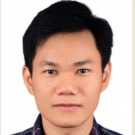Sustainability of Groundwater System: Bridging Emerging Issues and Their Underlying Mechanisms
A special issue of Pollutants (ISSN 2673-4672). This special issue belongs to the section "Water Pollution".
Deadline for manuscript submissions: closed (20 July 2023) | Viewed by 6298
Special Issue Editors
Interests: geospatial modeling; urban cover changes; climate extremes; human impact assessment; environmental footprints
Special Issues, Collections and Topics in MDPI journals
Interests: hydrology; groundwater; machine learning; water resources management; climate change; GIS; remote sensing
Special Issues, Collections and Topics in MDPI journals
Special Issue Information
Dear Colleagues,
Groundwater is a valuable natural resource that supports public, agricultural, economic and ecological diversity around the world. Groundwater systems are subject to extensive pumping in order to meet the increasing demands of population growth, agricultural expansion, and food security, resulting in groundwater pollution (in terms of quality and quantity) and making the aquifer unsustainable. However, the degree of groundwater pollution varies depending on the geographical location and other climatic and anthropogenic factors, leading groundwater systems towards different level of vulnerability. The world is continuously facing sustainable development issues related to groundwater systems under limited freshwater resources. Remote sensing (RS) and geographic information system (GIS) applications in groundwater hydrology have received only cursory attention, with most research focusing on a single aspect due to data limitations and this topic being less documented. This Special Issue provides a structured review on the roles of hydro–geospatial models towards the assessment of groundwater sustainability, looking at the available literature, modeling approaches and ground observations. This Special Issue will attempt to offer a closer look into the dynamic changes in groundwater level and its inter-connection with groundwater pollution, with the ultimate goal being to understand the extent of exposure subjected to natural and human interventions, which could be used to kick-start the adaptation planning processes and reduce the groundwater pollution/risks in the 21st century. Scientists and researchers are encouraged to introduce ideas and concepts defining groundwater sustainability, with key concepts of groundwater pollution and risk assessment, groundwater depletion, groundwater salinity, groundwater recharge, renewable groundwater, vulnerability of groundwater systems, relationships with land-surface characteristics (e.g., population and urban cover dynamics), large-scale climate patterns, and complex land–atmosphere feedback mechanisms, by incorporating various data sources such as remote sensing observations or modeling studies, targeted field campaigns, or long-term measurements ranging from local to regional spatial scales. Authors should pay particular attention to applications of hydro-GIS and RS in groundwater risk assessment from basin-scale to regional scale studies, with updated findings considering methods used for groundwater monitoring primarily focusing on machine learning, index-based, volume-based, and hydrological fluxes-based and static-verses-dynamic approaches. This Special Issue collection will be helpful for students and researchers in the major fields of water resource management, agriculture, and environmental engineering, as well as policymakers, particularly in developing countries.
Dr. Arfan Arshad
Dr. Quoc Bao Pham
Guest Editors
Manuscript Submission Information
Manuscripts should be submitted online at www.mdpi.com by registering and logging in to this website. Once you are registered, click here to go to the submission form. Manuscripts can be submitted until the deadline. All submissions that pass pre-check are peer-reviewed. Accepted papers will be published continuously in the journal (as soon as accepted) and will be listed together on the special issue website. Research articles, review articles as well as short communications are invited. For planned papers, a title and short abstract (about 100 words) can be sent to the Editorial Office for announcement on this website.
Submitted manuscripts should not have been published previously, nor be under consideration for publication elsewhere (except conference proceedings papers). All manuscripts are thoroughly refereed through a single-blind peer-review process. A guide for authors and other relevant information for submission of manuscripts is available on the Instructions for Authors page. Pollutants is an international peer-reviewed open access quarterly journal published by MDPI.
Please visit the Instructions for Authors page before submitting a manuscript. The Article Processing Charge (APC) for publication in this open access journal is 1000 CHF (Swiss Francs). Submitted papers should be well formatted and use good English. Authors may use MDPI's English editing service prior to publication or during author revisions.
Keywords
- sustainability
- groundwater system
- groundwater pollution
- point and non-point sources
- vulnerabilty
- climate change
- groundwater depeltion
- land–atmosphere interactions and feedbacks
- geospatial modeling
- drought footprints increasing groundwater risks
- watershed quality and quantity
- seawater intrusion threatens freshwater resources by rendering coastal groundwaters too saline




